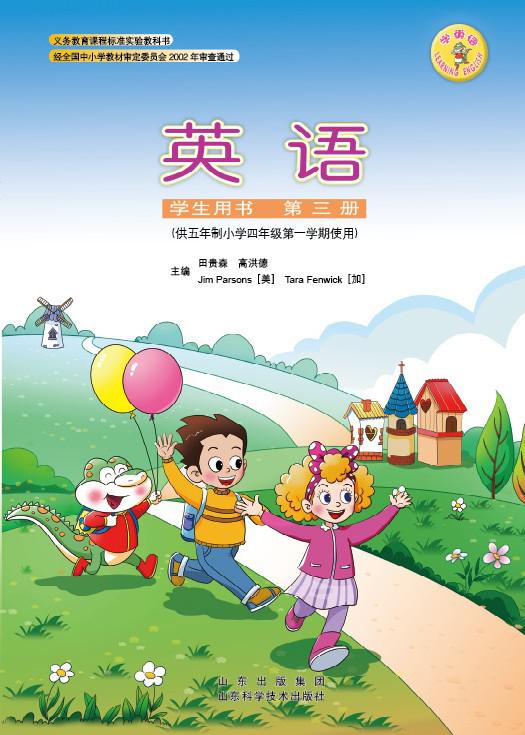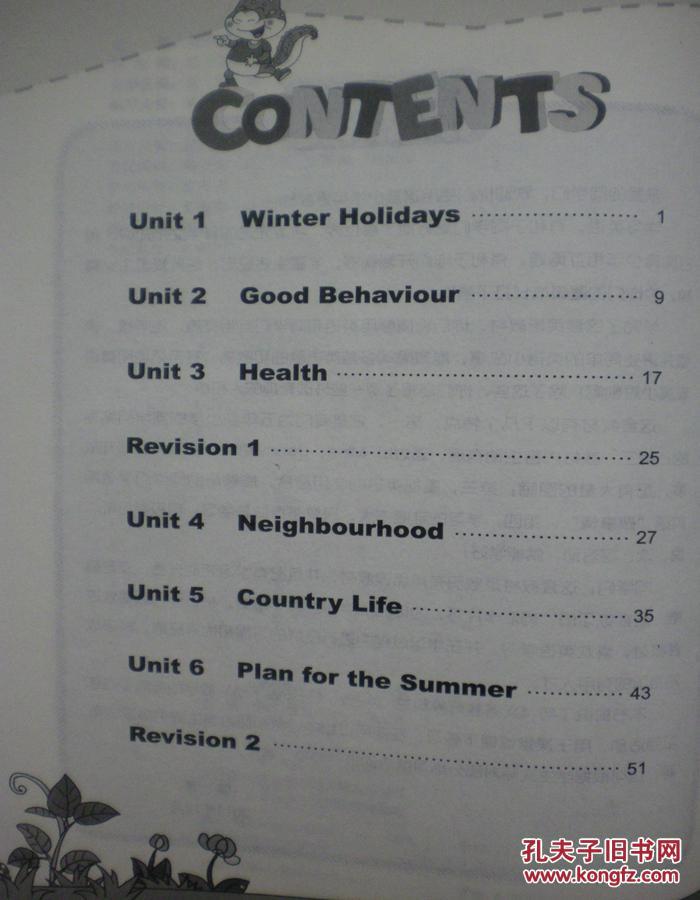【www.guakaob.com--小学英语】
Book6 Unit3 Lesson1 What’s wrong with you?教学设计
一、教学目标:
1、能够听懂、会说并认读单词wrong, feel, fever, cough, headache, bad, cold, medicine及句子What’s wrong?
2、能听懂、会说、认读、运用句型What’s wrong with you? 询问身体状况并用I cough and feel cold. I have a very bad headache. You have a bad cold. Take some medicine.描述病情并给出建议。
3、通过语言交流,学会关爱他人,关注健康。
二、教学重难点:
(一) 教学重点:
1、单词wrong, feel, fever, cough, headache, bad, cold, medicine的听说认读;
2、运用所学词汇与句型What’s wrong with you? I cough and feel cold. I have a very bad headache. You have a bad cold.谈论病情。
(二) 教学难点:
1、单词wrong, medicine的准确读音;
2、灵活运用句型谈论病情并给出建议;
三、教具准备:教学光盘,课件,单词卡片,医生帽
四、教学过程:
(一) Warming-up.
1、Greetings.
2、Sing the song“How are you?”.
3、Free talk.
教师问三名学生“How are you?”,之后又用“How do you feel today?”问第四个学生,引出新单词“feel”进行学习。
(二)Presentation
1、出示课文图片一教师接着说We all feel well today. But our friend Wang Hong doesn’t feel well. What’s wrong? 出示单词
卡片学习新单词“wrong”.教师要反复口型示范发音,强调发音要领与口型,让学生准确读出该单词。再板书句子“What’s wrong?”学生猜意跟读。
2、Dialogue.
(1)播放第一部分课文,回答教师提出的问题“What’s wrong with Wang Hong?”;引导学生回答“She has a fever.”学习新单词“fever”,升降调读,男女读,开火车读。
(2)看第二部分课文动画,让学生划出医生提出的问题“What’s wrong with you?”、“Do you have a headache?”以及王红对自身病情描述的语句“I cough and feel cold.”“I have a very bad headache.”学习新单词“cough”、“bad”、“headache”,爬音高读、男女读、两两读、开火车读;板书句子,教师领读后再与学生问答读说,学生两两练说问答。
(3)播放课文最后一部分,划出医生诊断和建议的句子“You have a bad cold.”、“Take some medicine.”,教师板书句子,告诉学生“cold”除了“寒的,冷的”外还有另一种含义“感冒,伤风”,教学新单词“medicine”。
(4)运用单词卡片以What’s missing?的形式巩固单词读说。
(5)Listen and repeat.
(6)Read the dialogue by themselves.
(三)Practice.
1. Let’s chant.
What’s wrong? What’s wrong? What’s wrong with you? Have a headache, have a headache. I have a headache. What’s wrong? What’s wrong? What’s wrong with you? Have a bad cold, have a bad cold. I have a bad cold.
Don’t worry. Don’t worry. Take some medicine and you’ll be all right.
2. Let’s talk.
六年级下册英语备课
任教学科:任教班级:任教老师: 英 语 六年级
一、 学情分析
六年级学生间的差别很大,个别基础比较差;当然也有好几个学生很突出,中等生也有很多,总体情况一般,学生习惯有待加强,个别家长不重视。因此对于学习能力强的学生,要积极培养和引导,对于后进生要积极的关注,培养他们良好的学习习惯,为进一步学习打下些基础。
二、 教材分析
本教材是根据教育部制定的《国家英语课程标准》编写而成的。供小学6年级的学生使用。本册教材的特点是:1.强调语言运用。2.注重能力培养。3.突出兴趣激发。4.重视双向交流。5.融合学科内容。6.重视灵活扩展。7.实现整体设计。8.提供多媒体的配套材料。
Let’s learn部分的词汇仍然是围绕话题归类出现的。这样有利于学生记忆和开展话题的讨论。Let’s learn的大部分词汇要求学生做到听、说、读、写四会掌握。用来巩固复习词汇的活动主要是结对和小组活动,以及Let’s find out等启发学生主动思考的活动。
Let’s talk部分是一个浓缩了的情景会话,目标句型突出。为给学生提供灵活运用语言的机会,这一部分提供了可供替换的内容。
Let’s Read 部分呈现了与各单元话题相关的趣味会话,旨在复习巩固本单元A、B部分的主要语汇,并适当扩展语言,增大语言输入量。引部分的教学目标是:读懂对话或短文;完成检测学生理解程度的活动。
在Pronunciation部分编排了40个国际音标的听音、认读训练,分别安排在六个单元里进行。本册编排了国际音标的内容,让学生通过朗读例词和完成单语、音标、图连线的活动初步建立单词的音、形、义之间的联系,为今后的语音学习打下较好的基础。
三、 教学目标
1.能听、说、读、写71个单词或短语以及10组句子和7个单句。(包括社区生活、交通法规、课余生活、业余爱好、职业、水循环等几个话题)。要求能在真实语境中正确运用并能读懂简短语篇。
2. 能听、说、认读16个单词。 3.能完成1个手工制作。 4.能听懂、会唱8首歌曲。 5.能听懂、会吟唱8首歌谣。 6.能完成6个自我评价活动。 7.能理解6个幽默小故事。
8.能了解6项简单的中西方文化知识。
2
四、 教学措施
1.认真学习小学英语课程标准,认真备课,钻研教材,采用新的教学理念进行教学,采用高效课堂教学,提高四十分钟课堂教学效果。
2.以活动为课堂教学的主要形式,设计丰富多彩的教学活动,让学生在乐中学、学中用,从而保证学生英语学习的可持续性发展。
3.通过听、说、读、写、唱、游、演、画、做等形式,进行大量的语言操练和练习。 4.培养学生拼读音标的能力,确保学生自主学习的质量。
5.设计全面、高效的课外作业,培养学生良好的书写习惯,做到整洁、规范、正确地书写。
6.对后进生转化要求要适度,应懂得“大目标,小步走”;激发后进生的学习热情,让后进生充分发展自己的才能,让后进生获得成功的喜悦。【小学英语鲁科版,五四制】
7.对尖子生加强培养,发掘其潜力,设计更多的弹性问题,让心有余力的优秀生留有扩展延伸知识的机会,积极引导学生独立思考,主动探索,寻求解决问题的途径。
8.要狠下工夫监督学生去完成课堂作业与课后作业,课后做到个别辅导,尽量减少差生的数量。做好与家长的沟通工作,与班主任多做交流,大家齐心协力完成六年级的教学任务。
教学进度表
3
4
Unit 1 Food and Drinks
单元备课
教材分析:
本单元教学内容为Lesson One-------Lesson Four,前三课为新授,第四课为复习课。主要语言功能是谈论并询问饮食爱好。本单元注重生活情境和情趣化教学,使学生在真实或模拟的情境中培养学生感知和运用英语的能力。 一、 教学目标:
1.能正确认读和书写字母A~G。
2.能听懂、会说、认读食品和饮料的相关单词:egg, bread, orange, juice,milk, please, fish, vegetable , rice, hungry, drink, apple并能结合句型灵活运用。
3.能听懂、会说、认读与饮食相关的句型:“I like eggs. ”“Do you like fish?” “I’d like some apple juice.” 4.能运用所学句型谈论饮食及自己和他人的喜好。
5.对中、西方的饮食差异有一定的了解,培养学生良好的饮食习惯。 二、 教材重难点: 教学重点
能听懂、会说以下用语:Do you like milk? Yes ,I do .
Would you like a hamburger? Yes, please .
What’s for dinner? We have fish, rice and vegetables.
教学难点
1.breakfast hungry vegetable 的发音。
2. Do you like---?Would you like---?What’s for dinner?这几个句型的灵活运用。 3.语音、语调的模仿。
Lesson 1 I like eggs.
课型:新授课
一、教学目标: (一)知识目标
1.学生能听懂、会说、认读下列单词:egg, bread, orange, juice, milk
2.学生能听懂、会说单词 breakfast, some, please 3.学生能听懂、会说句型:I like ... I don’t like... 4.学生能够听懂会说认读书写下列字母:Aa, Bb,Cc (二)能力目标:
通过真实的语言情境,学生能运用所学句型谈论自己对饮食的喜好。 (三)情感目标:
1.对中西方国家的饮食差异有一定的了解。
2培养学生学习英语的积极性,并养成良好的饮食习惯。 二、教学重难点: 教学重点:
能听、说、认读本课的主要单词egg, milk, juice, bread, 及breakfast并能在对话中灵活运用。 教学难点:breakfast的发音。 三、教学方法:
情景教学法、任务型教学法、TPR 四、教具准备:
颜色图片、头饰、课件、电子白板 五、教学过程: Step1 Warming-up
1.播放第一册课本59页的chant: “pear, pear, I like pears.”帮助学生复习学习过的水果类单词和I like--.句型。为本节课的学习打好基础。 2.教师出示水果图片,运用句型:I like ... I don’t like... Step2 Presentation
1.简笔画学习词组orange juice
在电子白板上用画笔画orange的简笔画,提问学生:What’s this?学生一定会回答:It’s an orange. 然后在橘子旁画一杯橙汁,引出:orange juice。通过各种形式的朗读巩固发音。可以采用chant:
Oranges, oranges, Do you like orange? Yes, I do. Yes, I do. Orange juice, orange juice. Do you like orange juice? Yes, I do. Yes, I do. 2.Listen and say.
Danny and Li Ming will have breakfast. Let’s watch, underline the new words.
2 Listen and repeat. Then answer: What does Danny like?
播放教学光盘,整体呈现课文,之后找学生回答问题。接着利用单词卡继续深入学习五个新单词:breakfast,egg, milk, bread,juice. Game: 通过观察教师口型,猜测食物类单词。 3 Ask and answer in pairs.
教师出示食物类单词卡,女生先问:Do you like--, Danny? 男生根据课文回答。然后角色互换。熟练后,同桌互相问答。
4 播放课文录音,学生指图跟读。注意一般疑问句语调的指导与纠正。 Step3 Practice
1 学生在组内分角色表演对话,并选两组到前面戴头饰表演。为了检查下面学生观看的是否认真,可以在每组表演完后,提个问题,如:Does --- like ---? Yes or No? What does --- like? 由于句型中设计第三人称,所以只要求学生作简单回答即可。
2 播放教学光盘,出示第二部分的Let’s talk.中的图片,学生模仿跟读。 3 Step4 Production 1 完成配套练习册1、2题。
2 模仿Let’s talk.部分的内容,在小组内问答交流,然后制成统计表格。
Step5 Learning letters.
1 利用字母卡片,检查学生认读情况,纠正不够准确的发音。注意纠正字母Aa的发音,。
2 出示四线格,教学生认识四线格并理解字母在四线格中的位置规律。规范板书字母的大小写,提醒学生观察并书空。对比字母的印刷体和手写体的区别。 3 学生在课本第三部分进行摹写。
4 学习字母下面给出的例词,通过慢读和分解读,使学生体会这四个字母在单词中的发音。请同学列举一些含有对应字母而且字母发音相同的单词。 5 完成配套练习册第三题,展示书写优秀的学生作品,激励书写不规范的学生练字。 Step 6 Homework
1 听课文录音,跟读模仿。
2 运用本课所学的语言询问家人及朋友对食物、饮料的喜好。可以制作成表格也可以画图配语句展示。
(第一个作业为必做,第二个作业鼓励有能力的学生尽量选作。)【小学英语鲁科版,五四制】
Unit 1 Lesson 2 Do you like fish?
课型:新授 一、教学目标; (一)知识目标
1、能听、说、认读食物单词:vegetables, chicken,fish, rice, lunch,并能在实际中应用。
2、能听懂、会说并认读句子:Do you like...?Yes, I do. No, I don’t. (二)能力目标:
能在生活中运用本课的词汇和句子表达自己的喜好。 (三)情感目标:
激发兴趣,培养学生的英语思维能力和英语交际能力。 二、教学重难点: 教学重点:
单词vegetables, chicken ,fish, rice, lunch
句型Do you like...?Yes, I do. No, I don’t.以及能正确认读和书写三个字母E F G。 教学难点:
熟练运用所学食物单词,灵活运用所学句型 三、教学方法:
情景教学法、任务型教学法、TPR 四、教具准备:
多媒体课件、录音机、磁带、单词卡、各种食物 五、教学过程: StepI:Warming up.
1、Greetings. 2、Say a chant.. StepII:Presentation. 1、Leading-in
Lessons 2 I read in my bedroom. (新授)
一、教学目标:
语言知识目标:
1.听懂、会说、认读家中房间的名称及相关单词: read, 方位词:on, in,并能结合句型灵活运用。
2. 听懂、会说、认读与本单元话题相关的句型:“I read in my bedroom.”
语言技能目标:
1.能听懂、会说、认读家中房间的名称及相关单词: read, 方位词:on, in,并能结合句型灵活运用。
2. 能运用所学句型谈论家中的布局,询问位置。
情感目标:帮助学生了解一些中外家庭房舍的布局特点,同时培养学生对家的热爱。
二、教学重难点:
重点:能听懂、会说并认读句子: “I read in my bedroom.” 并能运用所学句型描述房间。
难点:目标句型的灵活运用。
三、教学过程:
Step 1:Warming up :
1、Greetings :Good morning, boys and girls .
2、T: Last lesson ,which group is the winner ?You have the
UNIT 5 How do you get to school?检测题
(本检测题满分:100分;时间:60分钟)
一、听力部分(满分20分)
Ⅰ.听句子,选择与句子内容相符的图片。每个句子读一遍。(每小题1分,满分5分)
A. B. C. D. E.
1._________ 2._________ 3._________ 4._________ 5._________ Ⅱ.听对话及问题,根据对话内容选择正确的答语。每段对话读一遍。(每小题1分,满分5分)
6. A. Her bike is lost. B. There is something wrong with her bike.

C. She doesn’t like riding.
7. A. He takes a bus. B. He rides a bike.
C. He walks to school.
8. A. Thirty minutes. B. An hour.
C. An hour and thirty minutes.
9. A. By ship. B. By air. C. By bike.
10. A. Less than two miles. B. More than two miles.
C. Two miles.
Ⅲ.听对话,根据对话内容选择正确的答语。对话读两遍。(每小题1分,满分5分)
11. How does Mr Li go to work?
A. He goes to work by bus. B. He goes to work by boat.
C. He goes to work on foot.
12. How does Mr Li’s wife go to work?
A. She goes to work by car. B. She goes to work by bus.
C. She goes to work by boat.
13. How does Mr Smith go to work?
A. He goes to work by car. B. He goes to work by subway.
C. He goes to work by boat.
14. How does Mr Smith’s brother go to work?
A. He goes to work by taxi. B. He goes to work by subway.
C. He goes to work by motorbike.
15. How does Tom go to work?
A. He goes to work by bike. B. He goes to work by subway.
C. He walks to work.
Ⅳ.听短文,根据短文内容填空。短文读两遍。(每小题1分,满分5分)【小学英语鲁科版,五四制】
Mr. Brown has a car. In the morning hehis children to school in his car. Then he drives to work. Mr. Brown and his children do not haveat home but Mrs. Brown does. She does not go to work. She stays at home. She does some shopping and cleaning in the morning. In the afternoon shegoes to see some of her friends, has tea and talks a lot with them. Then she cooks
for her family. Mr. Brown comes back home much later than
his children. The children do not come back in their father’s car. They take ahome. They usually come back home before five.
二、笔试部分(满分80分)
Ⅰ.单项填空(每小题1分,满分10分)
21. —How does your sister go to school?
— .
A. Once a day B. Two miles C. By bus
A. to B. in C. for
23. It’s goodexercise every day.
A. take B. to take C. taking
24. —it is from here to the gym?
—About twenty minutes’ walk. D. Twenty minutes D. at D. takes
A. how long B. how far C. how soon D. how often
A. to B. for C. / D. on
the teacher?
A. about B. of C. on D. for
A. spend B. take C. takes D. pay
28. I don’t knowA. where is it B. where it is C. where be it D. it is where
A. I B. my C. me D. mine
30. Why not gbike? It’s not too far from here.
A. to; on B. on; by C. in; on D. by; by
Ⅱ.完形填空(每小题1分,满分10分)
Tom near the sea. Their house is not very high, but it is beautiful. There big trees and a small garden in fronttheir house. They plant flowers in the garden. Some are red, some are whitesome are blue. Tom and his family love garden very much.
Tom and his sister go to schoolbus. The bus is comfortable. There are air conditioners in the bus. And it is a double-decker bus. After school, they sometimes help their mumsome shopping at the Shopping Centre, and sometimes help their dad in the garden. At weekends, they often take some photos by the sea. summer, they often go swimming their parents.
31. A. lives B. lived C. living D. liveing
32. A. are B. is C. was D. be
33. A. to B. for C. at D. of
34. A. but B. or C. at D. and
35. A. they B. them C. their D. theirs
36. A. All B. Both C. Some D. Two
37. A. on B. by C. take D. sit
38. A. do B. doing C. does D. did
39. A. In B. On
40. A. and B. for
Ⅲ.阅读理解(每小题2分,满分20分) C. At C. of D. To D. with
A
Almost every child in cities has the chance to go to school, but not all children in the countryside are so lucky.

There is a girl called Xiao Lian. She is ten years old and lives in a small village. When she was seven, she wanted to go to school. But she could not, because her family was too poor to afford the school fees for her, so her parents had to keep her at home. Instead of studying, Xiao Lian looked after her younger brother and worked in the fields every day. Then Project Hope (希望工程) heard about Xiao Lian. It agreed to help her to go to school. Her wish of study came true, and now she is studying in a school.
Unluckily there are thousands of children who can not go to school. You can join in Project Hope and help these children. You know all the good work needs money. Project Hope needs your help.
If you give Project Hope 300 yuan each year, it can pay for one child to go to school for a whole year. With more money, Project Hope can build new schools, buy good desks, chairs, blackboards and books. Let’s help the children together and give them a chance to have a good start in life.
41. The phrase “school fees” meansin Chinese.
A.学费 B.校服 C.校规 D.住校费
42. Xiao Lian didn’t go to school when she was seven because.
A. her family was very poor
B. she had to look after her younger brother
C. she studied at home
D. she didn’t like to go to school
43. A poor child can go to school forwith 300 yuan.

A. half a year B. a whole year
C. a whole month D. nine years
44. Many children need our help.
A. in developed countries B. from rich families
C. in small villages D. in big cities
45. From the passage we know that.
A. Xiao Lian’s father worked for Project Hope
B. Xiao Lian’s younger brother joined in Project Hope
C. there are three people in Xiao Lian’s family
D. Project Hope helps poor children to go to school
B
The new school term is coming. Now the school clerks are planning a new timetable for Class 5, Grade 7.
There are six classes every day,four in the morning and two in the afternoon. The students have a math class every day. And they have seven English classes in a week. Two of them are given by a foreign teacher and should be arranged(安排) together on Thursday morning.
There are five Chinese classes in a week. Two of them should also be arranged one after the
other for the students to write their compositions.
They have two physics classes in a week but on different days. Besides these, there is an art class every Wednesday afternoon.
It’s necessary and important for students to take enough exercise. So they have two PE classes every week. And they can do outdoor activities after school every afternoon.
Ⅳ.词汇运用(每小题1分,满分10分)
A.根据句意和所给的中文提示,写出句子中的单词。 分钟) to finish the work.
(七十).
(火车).
54. 骑) a bike is interesting for the boys.
55. —How far is it from here? —公里). B.根据句意,用所给单词的适当形式填空。
58. Don’t(worried) about your English. We can help you.
59. He feels very tired(疲劳的);Ⅴ.同义句转换(每小题2分,满分10分)
61. He usually rides his bike to school.
①He usually to school .
②He usually to school .
62. Alice goes to school on foot every day.
Alice school every day.
63. Jack spends 30 minutes driving to work every day.
ItJack 30 minutes to work every day.
64. Mr. Green goes to Shanghai by train.
Mr. Green to Shanghai.
65. How do you like the subway?
you the subway?
Ⅵ.书面表达(满分20分)
根据汉语提示及要求,用英语写一篇短文。
提示:王慧是我的好朋友,她在上海上学。她的家距离学校约两公里,她通常骑自行车去上
学,大约用15分钟。但下雨天她乘出租车,大约4分钟;她的父母在离家5公里的一家医院工作,每天开小汽车上班,大约要用15分钟。
要求:1.条理清楚,意思连贯,语句通顺,标点正确;2.词数不少于70。
_____________________________________________________________________________________________________________________________________________________________ ______________________________________________________________________________________________________________________________________________________________
上一篇:牛津上海版
下一篇:人教版小学三年级英语,课文电子书